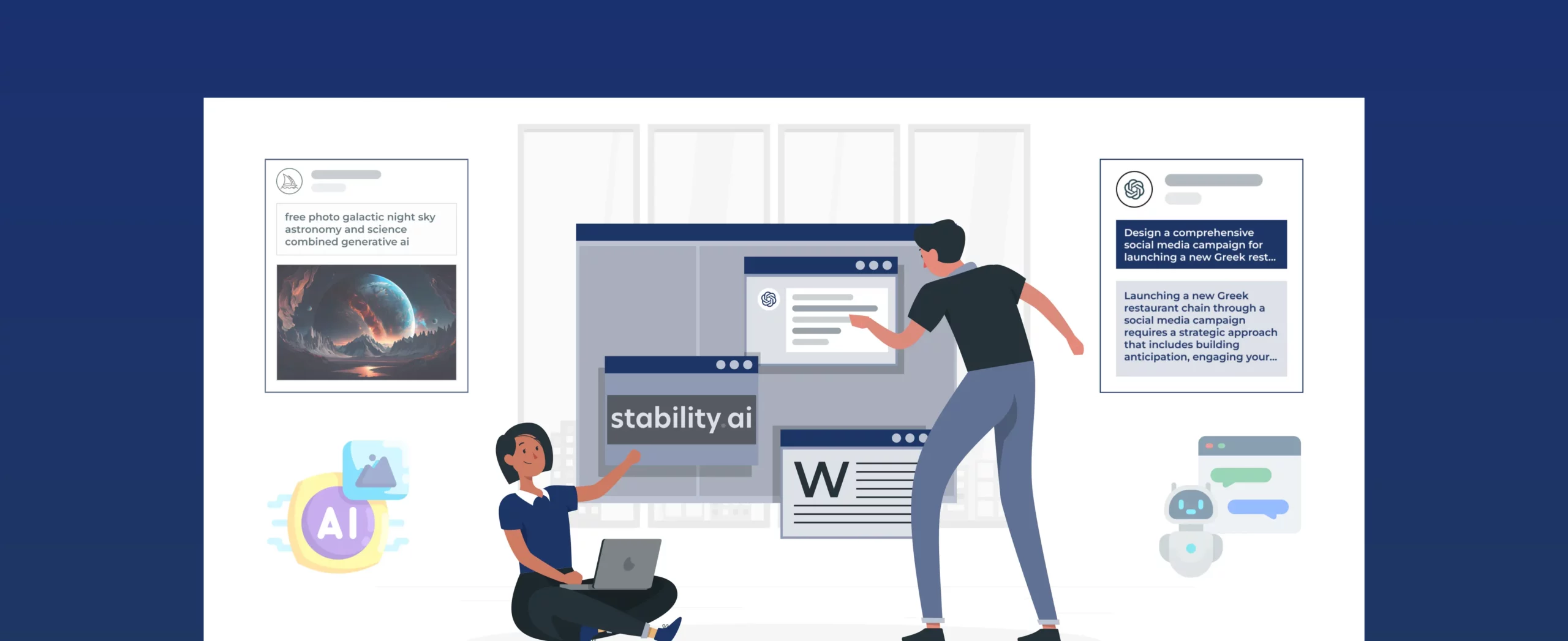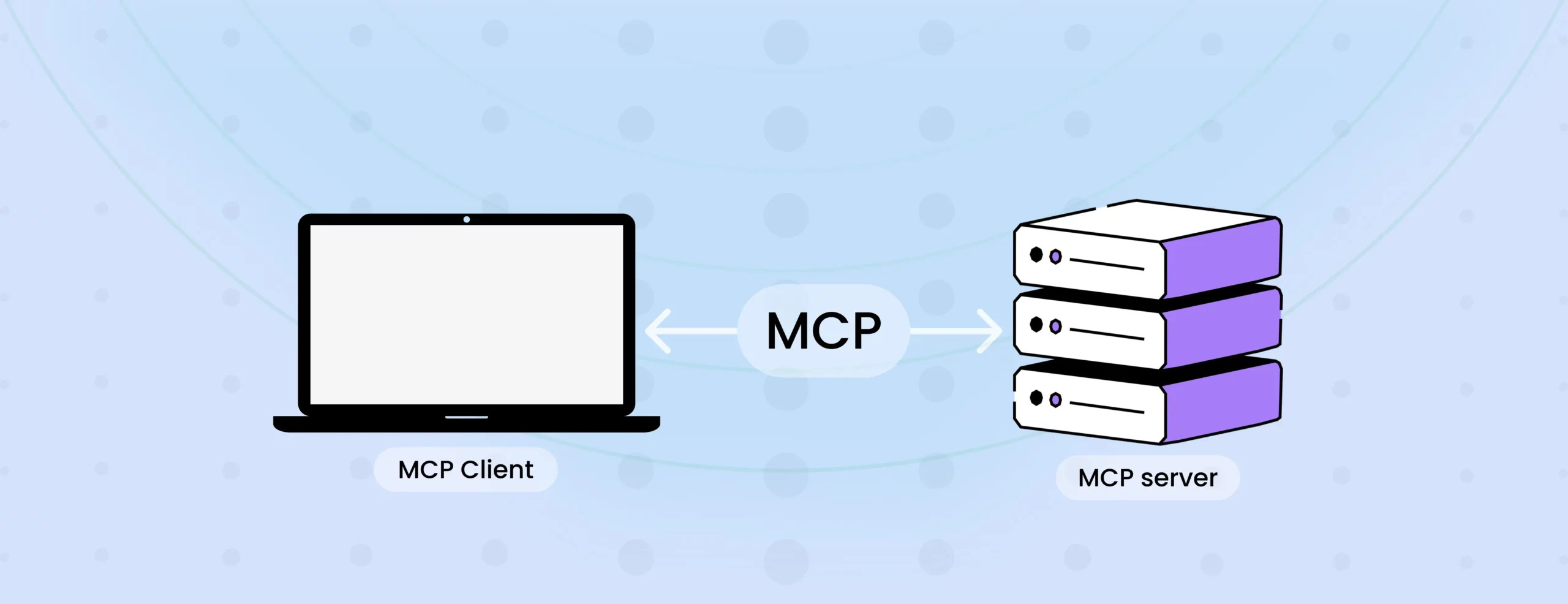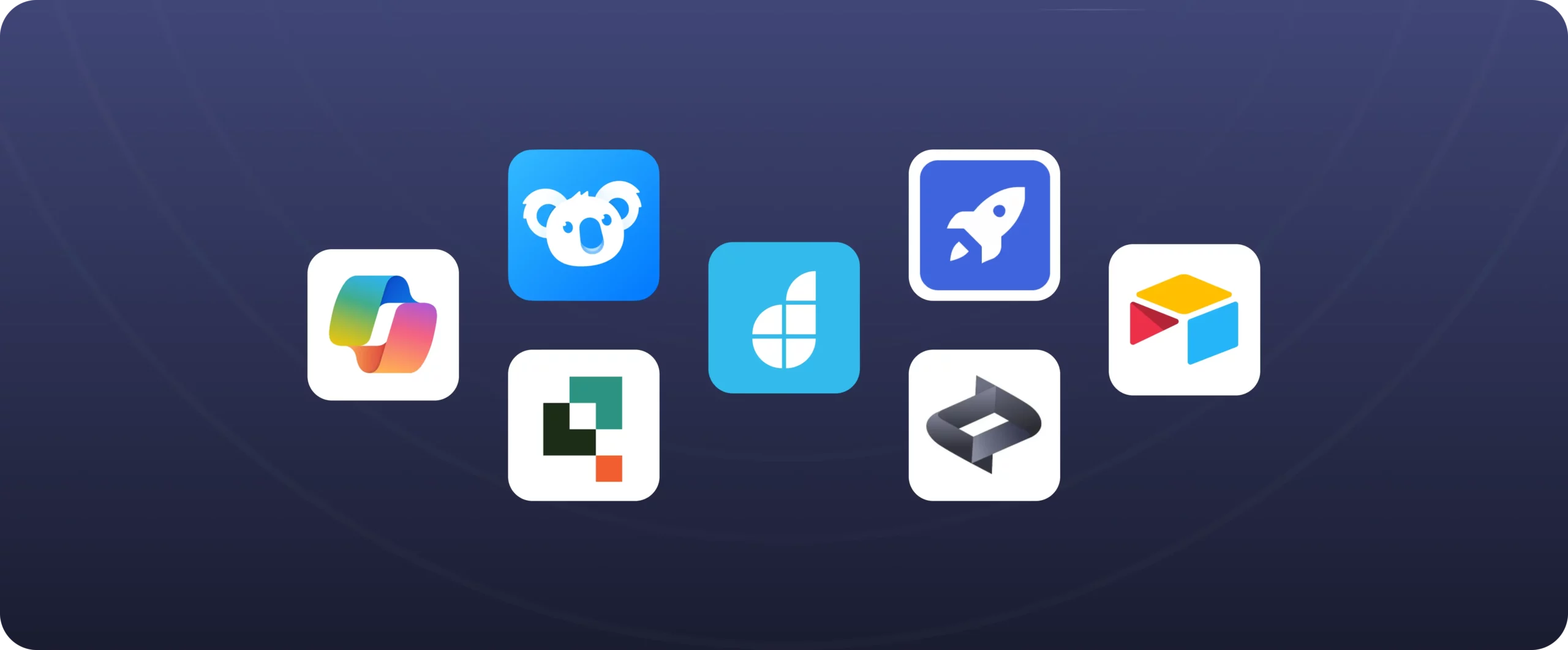

The Role of Low-Code in AI-Powered Applications
Did you know that ChatGPT itself is forecasted to generate a revenue of $200 million by the end of 2023?
One of the most promising technologies that has emerged in recent years is artificial intelligence (AI). Understand that AI has the potential to revolutionize various industries by automating processes, improving decision-making, and enhancing customer experiences.
Now imagine leveraging these AI capabilities to:
- Automate tasks
- Extract valuable insights
- Streamline processes
What’s more, these capabilities make way for organizations to develop smarter, more sophisticated applications that excel at solving problems efficiently.
However, leveraging AI this effectively can be a complex and challenging task, which requires specialized skills and resources. If you’d like to explore Generative AI as a solution, it’s better we first dive into its complexities and the challenges one can face while creating AI powered solutions for their business.
The Power of Generative AI: Why it’s Growing in Popularity
Generative AI, a subset of AI, has gained significant attention for its ability to create creative content, such as images, text, and music. Due to its abilities, we can’t deny the great promise it holds for businesses looking to enhance their operational efficiency and deliver personalized experiences to customers.
Image source: TechTarget
It uses algorithms and machine learning techniques to generate original and unique outputs based on patterns and data it has been trained on.
By harnessing the power of generative AI, companies can:
- Automate repetitive tasks,
- Generate unique content,
- Gain valuable insights from vast amounts of data
Awesome, right? But there’s a catch!
The integration and application development timelines for generative AI can be lengthy and complex, often delaying its practical implementation.
The Growing Challenges of Generative AI
While generative AI holds immense potential, many businesses struggle with the complexities of integrating and developing applications using this technology. You may get the code for building your application, but it may take quite some time to refine it to ensure its successful implementation.
This ends up increasing the amount of time you spend in building the applications and forces you to add in more labor that is required.
This happens because developing AI-driven applications requires:
- Expertise in fine-tuning models
- Designing and populating vector databases
- Training algorithms
Unfortunately, we are in a short supply for these. So how does one overcome these challenges?
The answer isn’t far – Low-code application development platforms.
The Role of Low-Code: Understanding Low-Code Technology
Amidst these challenges, low-code technology emerges as a one stop shop for businesses seeking to leverage the power of AI.
Low-code platforms provide a solution that bridges the gap between the demand for AI-driven solutions and the scarcity of skilled developers. These platforms enable businesses to rapidly develop and deploy applications at speed, with governance in place, ready UI blocks, and integrated AI, democratizing the app development process.
Low-code technology empowers “citizen developers,” by helping them create and optimize applications quickly and efficiently.
Unlike traditional development methodologies, low-code platforms utilize:
- Visual interfaces, without worrying about UI libraries & dependencies,
- Drag-and-drop functionality with pre-built UI and action blocks,
- Templates, widgets, workflows, and layouts to quickly assemble
- And the best of all – seamless integrations
These simplify the development process hassle-free. This approach allows users to build applications by assembling pre-existing building blocks, reducing the need for manual coding.
Low-Code & Its Smooth Integration Capabilities
One of the key advantages of low-code technology is its ability to seamlessly integrate with various data sources, including those required for AI applications.
Low-code platforms offer integration capabilities that enable businesses to connect their applications with databases, cloud services, and third-party APIs. This allows for the smooth and efficient flow of data. Now, with APIs from platforms like OpenAI, one can easily integrate a low-code platform, empowering it with AI-driven capabilities to access and analyze information from multiple sources or perform other advanced actions as per prompts.
Simplifying Integration with OpenAI
OpenAI, one of the leading AI research laboratories, has played a significant role in advancing the field of AI. Integrating OpenAI’s models and capabilities into applications can be a complex process that requires specialized knowledge and expertise. However, low-code platforms simplify this integration by providing pre-built connectors and components specifically designed for seamless integration with OpenAI.
This enables businesses to leverage the power of OpenAI without the need for extensive coding or technical skills.
“The evolution of generative AI models will further lower barriers to using low-code and no-code development tools, and potentially lead to the birth of a whole new class of intelligent developer technology.”- Anirban Ghoshal
Senior Writer, InfoWorld
Here’s how Low-code can benefit from Generative AI
Generative AI can be applied in various ways to enhance the capabilities of low-code development platforms. Here are a few examples of how generative AI can be used with low code and how it can be your ultimate swiss knife to app development.
- Content Generation: Generative AI can be used to automate the generation of content within low-code applications. For example, a low-code platform for marketing ad copies could utilize generative AI to automatically generate personalized product descriptions or blog posts based on user preferences and data.
- Image and Design Generation: Generative AI can assist in the creation of visual elements within low-code applications. It can generate unique and eye-catching designs, logos, or illustrations based on user inputs and preferences, further speeding up the task.
- Natural Language Processing: Generative AI can enhance the natural language processing capabilities of low-code applications. It can be used to automate tasks such as sentiment analysis, language translation, or text summarization, enabling low-code applications to process and understand human language more effectively. The application of this can be found to enhance customer support operations and dealing with client grievances.
- Data Augmentation: Generative AI can be used to augment datasets used in low-code applications. It can generate synthetic data that closely resembles real data, allowing developers to create more robust and diverse models for machine learning and AI-powered features.
Advantages of Low-Code to Build AI-Powered Apps
The benefits of using low-code technology for AI application development are numerous and impactful. Here are some key advantages:
- Rapid Development: Low-code platforms accelerate the development process by providing visual design tools, pre-built components, and templates. This allows developers to build applications more quickly and efficiently, reducing time to market.
- Agility and Flexibility: Businesses can respond quickly to changing market conditions and evolving customer needs through low-code application development. The iterative nature of AI development often requires frequent adjustments and fine-tuning, and low-code platforms facilitate rapid prototyping and deployment, enabling organizations to adapt their AI applications accordingly.
- Reduced Dependence on Skilled Developers: LCAPS empowers citizen developers, individuals with less tech background to contribute to the development process. This lessens the strain on IT departments, potentially liberating substantial engineering resources for other critical tasks.
- Enhanced Collaboration: These platforms also foster better collaboration between business and IT teams. They also streamline the process for tech teams to promptly meet the demands of business users, requiring them only to seamlessly integrate the necessary resources and logic, manage permissions, and the application is primed for immediate use.
- Cost Savings: By minimizing the need for extensive coding and specialized developers, low-code platforms significantly reduce development costs. With low-code platforms, you can build applications without requiring extra resources, making it accessible even for junior developers and business users, under the supervision of the company’s IT teams, also reducing shadow IT.
- Scalability and Maintenance: Low-code platforms offer scalability and flexibility, allowing applications to grow and adapt with business needs. These platforms also provide robust security and compliance features, ensuring that AI applications meet industry standards and regulations.
Now that you have seen the kind of benefits you get using low-code platforms for generative AI, the next step would be finding the ideal platform to build your AI driven applications.
Build AI-powered Apps on DronaHQ
Through seamless integration with the OpenAI API, DronaHQ empowers developers to infuse their micro-applications with an intellect, endorsed by ChatGPT API’s robust support. This combination unlocks the immense potential of:
- Natural language comprehension and generation
- Image processing
- Enhanced customer journey personalization
And you can find an array of additional functionalities as well.
The introduction of “Ask AI” by DronaHQ helps developers to swiftly and effortlessly generate intricate SQL queries without any previous SQL knowledge. This streamlines workflow, mitigates errors, and liberates developers to concentrate on other dimensions of application development.
It serves as a stepping stone to DronaHQ’s comprehensive vision. The roadmap includes broadening the scope of this feature to include diverse domains, utilizing JavaScript code and foundational content generation, among other aspects.
Embark on a journey of efficiency and precision with “Ask AI,” and chart the frontiers of AI-empowered application development through the synergistic forces of DronaHQ and OpenAI. Initiate your exploration today to unlock the untapped capabilities of your micro-applications!
Learn more about building AI-powered apps on DronaHQ
Conclusion
In conclusion, low-code technology plays a pivotal role in enabling businesses to harness the power of AI for application development. By simplifying the development process, and streamlining integration with AI capabilities, low-code platforms empower businesses to rapidly create and deploy AI-driven applications.
With low-code technology as a catalyst, businesses can embrace the AI revolution and unlock new possibilities for growth and success.
Frequently Asked Questions
Q: What is the difference between generative AI and AI?
A: Generative AI, a subset of artificial intelligence (AI), focuses on creating new content, data, or information autonomously. It goes beyond traditional AI, which generally involves rule-based decision-making or pattern recognition. While AI encompasses a wide range of techniques and applications aimed at mimicking human intelligence, generative AI specifically refers to systems capable of generating creative outputs like text, images, music, and more. In essence, generative AI possesses the ability to produce novel content that wasn’t explicitly programmed or predefined.
Q: How does generative AI relate to low-code and no-code development?
A: Generative AI has a transformative role in the realm of low-code and no-code development platforms. In low-code and no-code environments, developers and non-developers can create applications visually using drag and drop interface and code only when they need to add customizations. Generative AI takes this a step further by enabling these platforms to automatically generate complex code segments, components, or even entire application modules. This integration allows for quicker, more efficient, and less error-prone app creation. Generative AI in low-code and no-code frameworks empowers users to achieve advanced functionality and customization without having to possess extensive coding expertise.
Q: What does the term “low-code AI” refer to?
A: Low-code AI signifies the fusion of low-code development methodologies with artificial intelligence capabilities. In low-code development, applications are built with minimal manual coding, leveraging visual interfaces and pre-built components. The introduction of AI into this approach, known as low-code AI, enhances the development process by automating various tasks such as data processing, decision-making, and even generating code snippets. This amalgamation streamlines the application development lifecycle, accelerates project delivery, and provides developers with intelligent tools to create more sophisticated and feature-rich applications.
Q: How is AI used in coding?
A: Artificial Intelligence (AI) is revolutionizing the field of coding by introducing innovative techniques and tools that enhance efficiency, accuracy, and creativity in software development. Here are several ways AI is utilized in coding:
1. Code Generation: AI-powered tools can automatically generate code snippets, templates, and even entire functions based on high-level descriptions or requirements. This accelerates development, reduces manual coding, and ensures consistent coding practices.
2. Autocomplete and Suggestions: AI-driven code editors provide context-aware autocompletion and intelligent suggestions as developers type. These suggestions can include function names, variable names, and syntax corrections, improving coding speed and accuracy.
3. Bug Detection and Debugging: AI algorithms can analyze code for potential bugs, vulnerabilities, and errors. They can identify patterns that might lead to runtime issues, security breaches, or performance bottlenecks, assisting developers in debugging and maintaining code quality.






